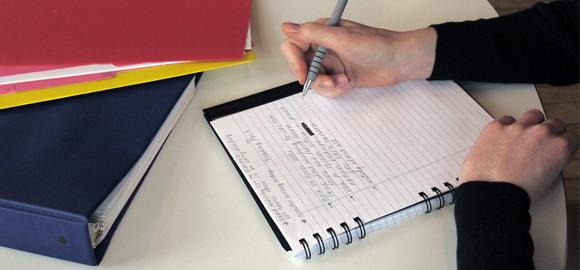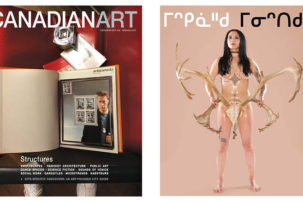The artist statement is one of the key texts of professional art practice, so it’s often expected that students learn to craft good ones well before graduation. Here are some tips to help you with this important exercise.
Build a research resource
Whether focusing on one class assignment or the development of your general practice, it’s a good idea to keep a notebook, scrapbook or sketchbook of everything that inspires you along the way. Attach articles and highlight important points. Write down moods your studio process brings up. Paste in images of artworks or artists that teachers suggest might relate to your production. Note descriptive words that you hear repeatedly from your peers regarding your work. Soon you’ll have a research resource that you can draw upon when writing your statement.
Tap into the power of revisions
It can be difficult to get anything written if we think the first draft has to be top-notch. A more effective (and efficient) method of producing strong writing is to tap into the power of revisions—let the first draft be the long, rambling, raw material it is for most writers. Then refine it into a second draft, and a third, and fourth, and a fifth, perhaps trying to trim it by a half or a quarter each time. With each draft, the final product will get more focused.
Be clear and concise
An artist statement can be a kind of short essay, and every essay needs a thesis. This thesis clearly identifies what you’re trying to do in a sentence or two. It also tends to work better when it is specific rather than vague. When you’re working on your thesis statement, ask yourself some questions: How can I make this more specific? Is there anything I’m leaving out? If you’re unsure how your message is coming across, have friend read your statement and see what feedback they have.
Remember less can be more
After reading the statements of other contemporary artists, one may feel pressured to use words or reference concepts one doesn’t completely understand. But it’s important to aim for honesty, and, again, clarity. Don’t force yourself to present a long statement if you can say everything you need to in a few paragraphs. Don’t reference something that isn’t actually relevant to your work. And don’t use big, unwieldy words unless they actually express what you are trying to do.
Take advantage of your local writing centre
Most universities and colleges now have centres devoted exclusively to helping students with their writing. From customized workshops to one-on-one tutoring, these centres can be invaluable in helping to develop your artist statement stills—free of charge! Call or drop by to see how your writing centre staff can be of assistance with idea generation, editing, formatting and more.

 Image by Stefanie Fiore
Image by Stefanie Fiore







